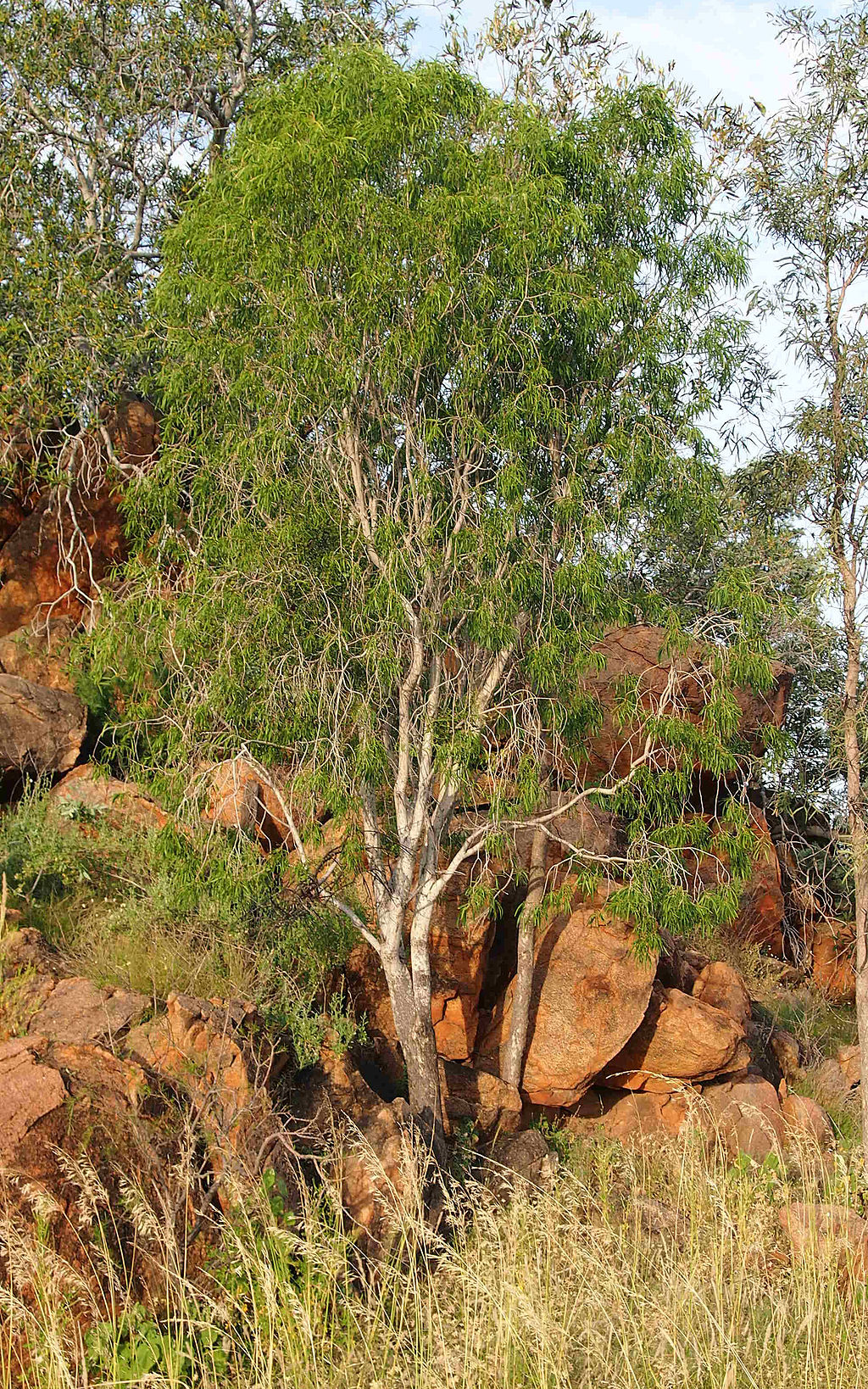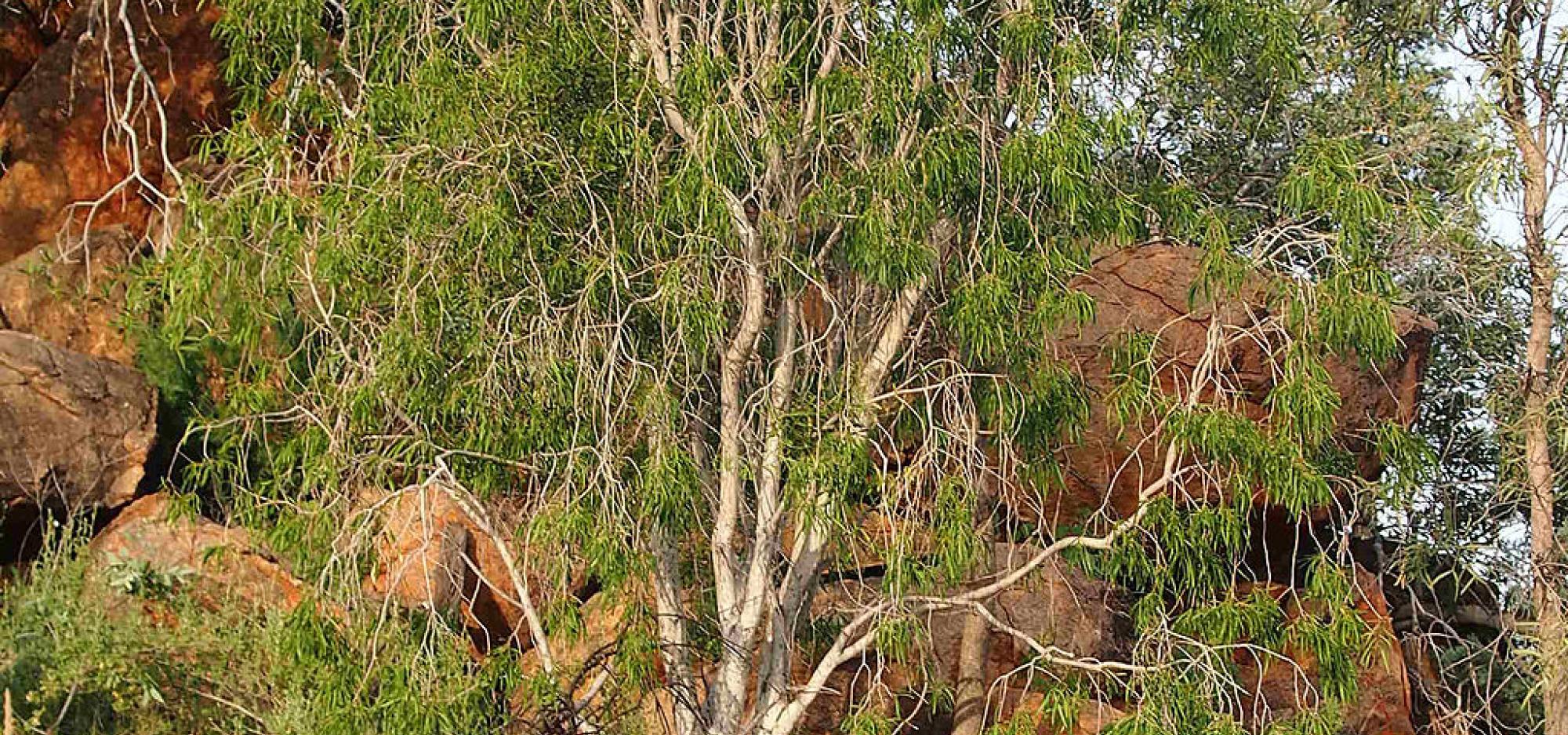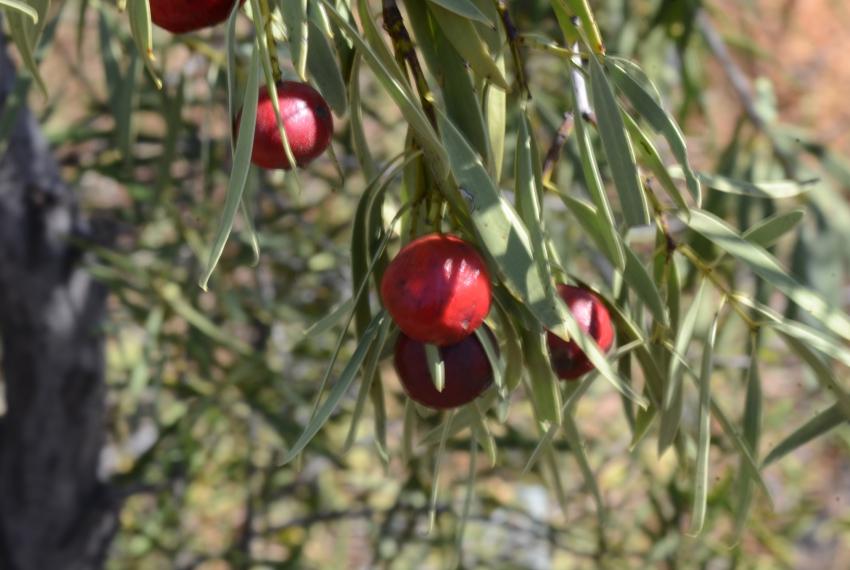Noongar Name: Mangar
Wongutha Name: Wartapirti
Ngalia Name: Warrkiri
Other Aboriginal Names: Gumbi Gumbi
Botanical Name: Pittosporum angustifolium
Common Name: Native apricot

Appearance
Weeping Pittisporum grows to around 8 m in height. The white/creamy bell-shaped flowers appear from June to October. The flowers are followed by smooth, yellow to orange fruit about 10 to 15 mm long
Distribution
Avon Wheatbelt, Central Ranges, Coolgardie, Esperance Plains, Gascoyne, Geraldton Sandplains, Gibson Desert, Great Victoria Desert, Hampton, Jarrah Forest, Little Sandy Desert, Mallee, Murchison, Nullarbor, Ord Victoria Plain, Pilbara, Swan Coastal Plain, Yalgoo.
Uses
Seeds, although bitter in taste, are edible and ground into flour to make damper. Infusion of the seeds, fruit pulp, leaves or wood, made by soaking in water, were taken internally for the relief of pain and cramps.
Paste and decoction made from fruit pulp were drunk and applied topically for eczema and pruritus. Compresses of warmed leaves were placed on the breasts of new mothers to induce the flow of milk.
Sources
https://florabase.dpaw.wa.gov.au/browse/profile/19744
https://tuckerbush.com.au/gumbi-gumbi-pittosporum-angustifolium/
Vivienne Hansen and John Horsefall 2019, Noongar Bush Tucker – Bush food plants and fungi of the south-west of Western Australia UWAP - UWA Publishing

